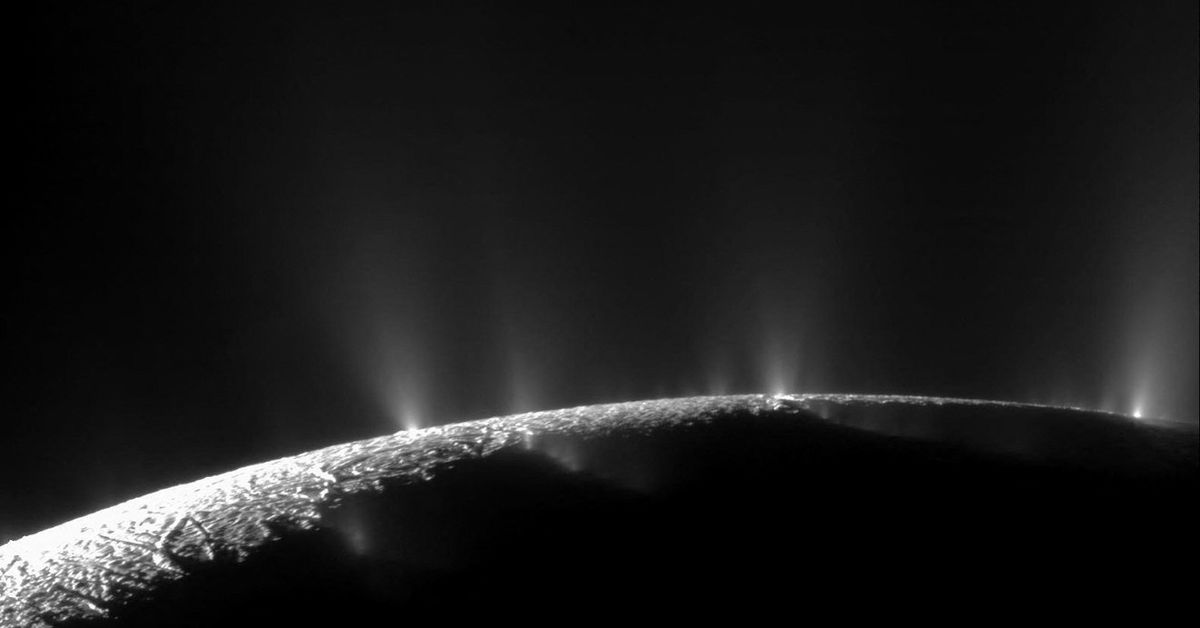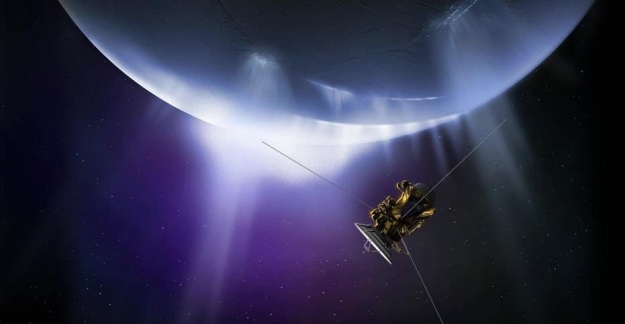Stunning Discovery Says Life Possible on Saturn’s Moon
A recent discovery by NASA’s Cassini spacecraft reveals the potential for life on Saturn’s moon Enceladus. The discovery was made in ice crystals spewed from the interior ocean of Enceladus, containing high concentrations of phosphorus. This makes Enceladus a prime candidate in the search for life beyond Earth, if only to microbes.
Enceladus and Cassini

NASA’s Cassini spacecraft spent 13 years exploring the gaseous giant planet Saturn, its rings, and its moons. Enceladus, about one-seventh the size of Earth’s moon, has a subsurface ocean beneath its frozen crust at its south pole, making it a prime candidate in the search for places in our solar system beyond Earth that are habitable. The spacecraft flew through salt-rich ice grains ejected into space from geysers erupting from Enceladus’ interior ocean.
Phosphorus, a Vital Element

The discovery of high concentrations of phosphorus in Enceladus’ ice crystals is significant, as it is an essential element for all biological processes on Earth. Phosphorus is fundamental to the structure of DNA and a vital part of cell membranes and energy-carrying molecules existing in all forms of life on Earth.
Geochemical Modeling

The study’s co-authors in Europe and Japan conducted geochemical modeling, showing that phosphorus exists in concentrations at least 100 times that of Earth’s oceans, bound water-soluble forms of phosphate compounds. Essentially, this means that Enceladus’ interior ocean contains enough phosphorus to potentially support life.
Not Yet Confirmed

While the discovery of phosphorus in Enceladus’ ice crystals and the possible support of life in Enceladus’ interior ocean is a stunning discovery for astrobiology, life has not yet been confirmed beyond Earth. The presence of phosphorus, complex organic compounds, water, and other fundamental building blocks of life are evidence only that a place such as Enceladus is potentially habitable, not that is inhabited.
Conclusion
The recent discovery of high concentrations of phosphorus in Enceladus’ ice crystals is a significant discovery, opening the possibility of life beyond Earth. Enceladus is a prime candidate for the search for life in our solar system, and the discovery is a massive step forward in the exploration of our galaxy.
FAQs
1. Is Enceladus the only moon with an interior ocean?
No, there are other moons in our solar system, such as Jupiter’s moon Europa, that are believed to have an interior ocean beneath its icy surface.
2. Why is the discovery of phosphorus in Enceladus’ ice crystals significant?
Phosphorus is an essential element for all biological processes on Earth, making the discovery crucial in the search for life beyond our planet.
3. Has life been confirmed to exist on Enceladus?
No, while the discovery of high concentrations of phosphorus in Enceladus’ ice crystals is stunning, it is not confirmation of life beyond Earth.
4. How did Cassini collect data from Enceladus?
Cassini gathered its data during passes through a plume of ice crystals and through the material that feeds Saturn’s faint “E” ring with icy particles outside the planet’s brighter main rings.
5. What is the importance of the search for life beyond Earth?
The search for life beyond Earth helps us better understand our place in the universe and the possibility of life in other galaxies. It is a significant step in expanding our knowledge of the cosmos.

